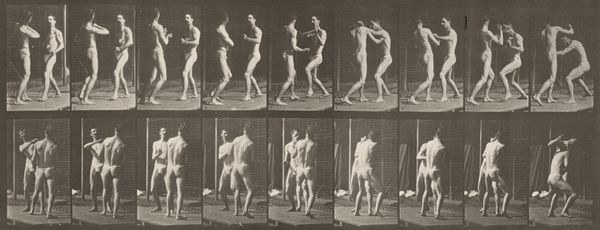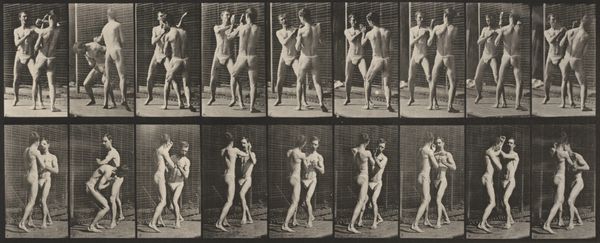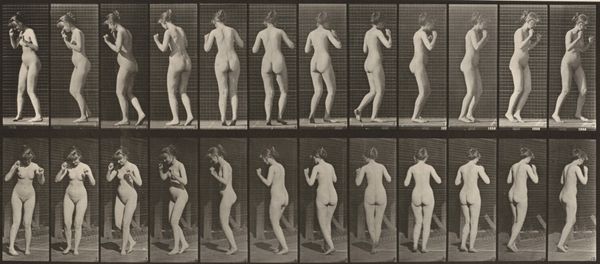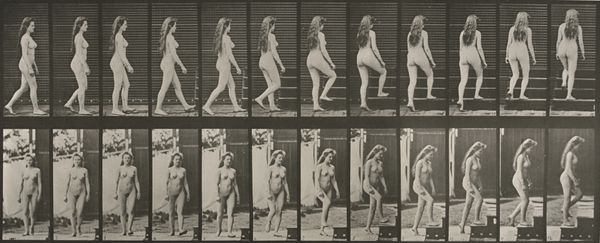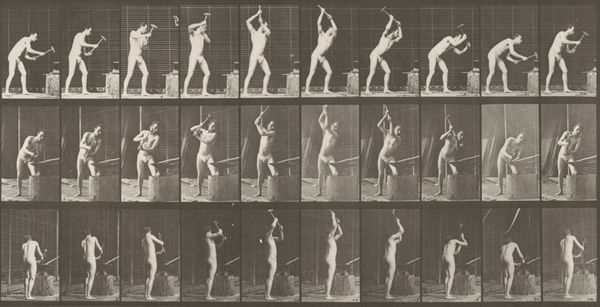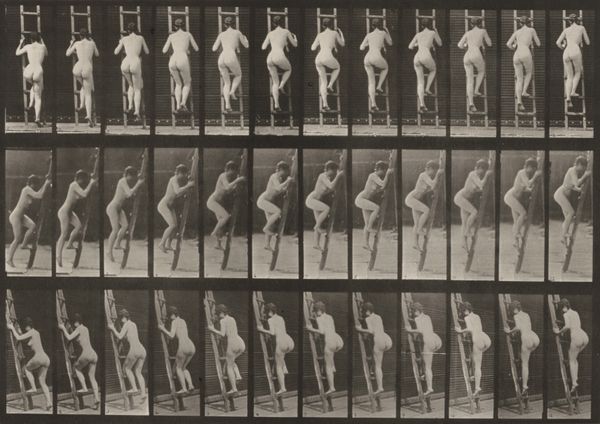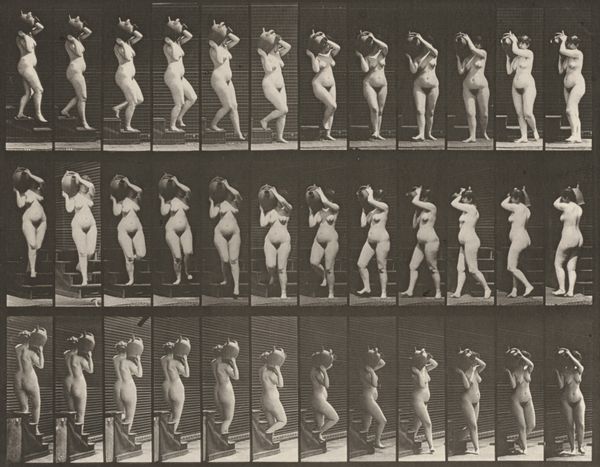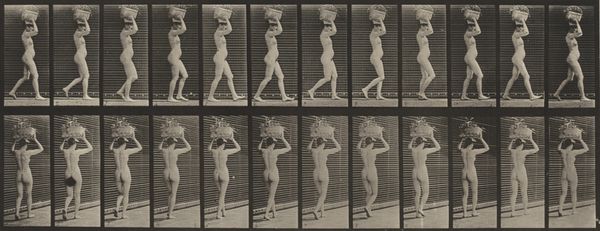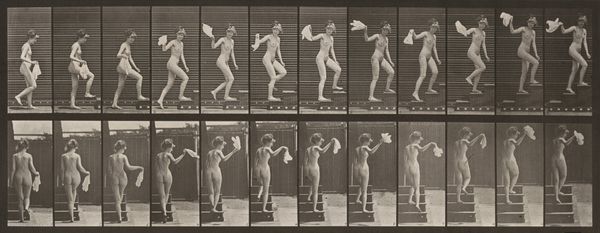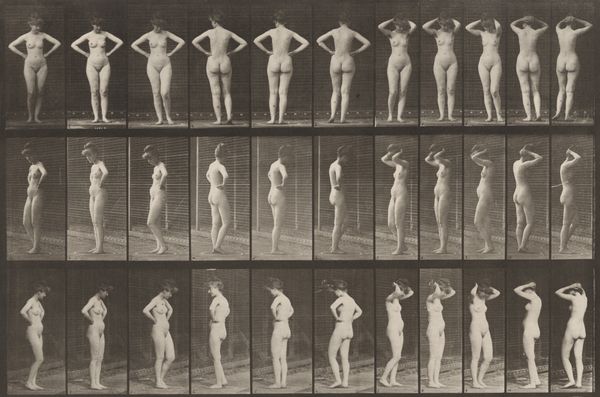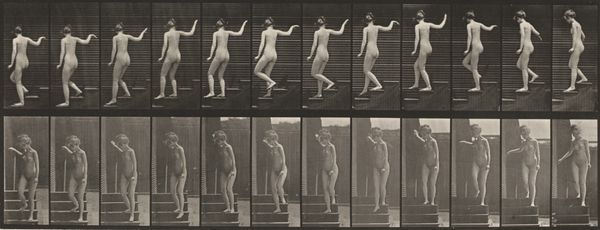
print, photography, gelatin-silver-print
#
action-painting
# print
#
figuration
#
photography
#
gelatin-silver-print
#
genre-painting
#
nude
#
realism
Dimensions: image: 21 × 36.8 cm (8 1/4 × 14 1/2 in.) sheet: 47.7 × 60.35 cm (18 3/4 × 23 3/4 in.)
Copyright: National Gallery of Art: CC0 1.0
Editor: So, this is Eadweard Muybridge's "Plate Number 341. Boxing, open hand" from 1887, a gelatin silver print showing the sequential movements of two men boxing. The fragmented action reminds me a little bit of cubism. How do you see it? Curator: I see a meticulous breakdown of labor. Forget the idealized human form often found in art of the time; this is about the process of boxing, rendered through the relatively new medium of photography. How does Muybridge’s process highlight the mechanics of labor? Editor: I guess by showing it frame by frame? I mean, photography was becoming a new tool for scientific study then, right? Almost like dissecting the action… but why nude models? Curator: Exactly. It's tempting to focus on the science or art, but consider the social context. Why choose nude models in this study? What power dynamics are at play here in the commodification of their bodies, of this performance, and the labor needed to achieve this effect? Is Muybridge consciously revealing these dynamics, or complicit in them? Editor: So you are saying he’s presenting labor as a visual commodity, and it’s not as straightforward as just science or art… because the men performing are nude? That definitely throws another wrench in how I viewed it. Curator: Precisely. The image reveals as much about the process of scientific observation and image production as it does about the athletic form. Consider what the access to the means of production says about the society which this was possible in. Editor: That's a compelling perspective. It makes me rethink the piece less as a study of motion and more as an artifact reflecting Victorian-era attitudes towards labor, science, and even the human body. I'll never look at Muybridge the same way. Curator: And understanding the material conditions behind art like this allows us to unpack the assumptions embedded within the image. Keep questioning the materials and the processes that produce the art that surrounds you!
Comments
No comments
Be the first to comment and join the conversation on the ultimate creative platform.
